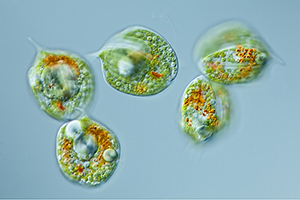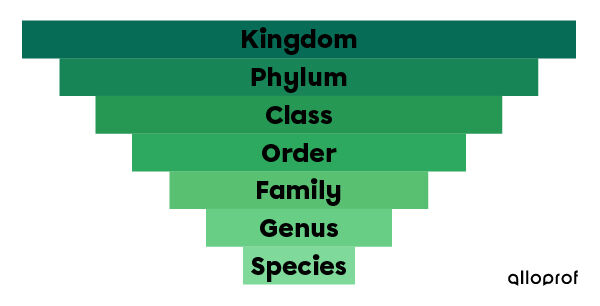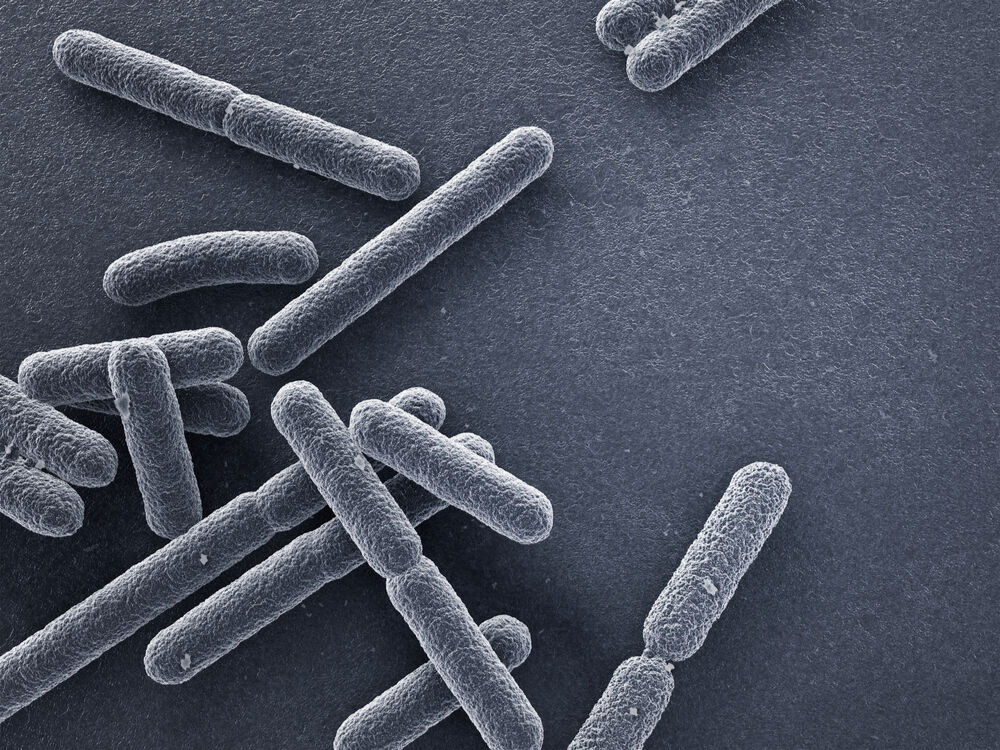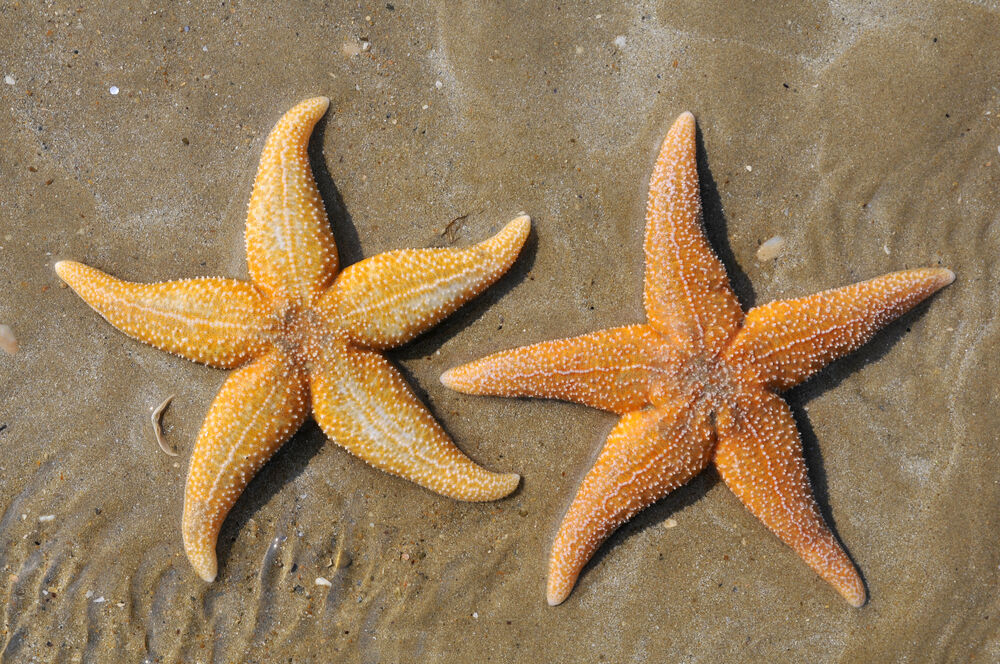Taxonomy is the science that studies the classification of living organisms into different categories, according to strict rules that take into account physical and genetic characteristics.
Formerly, living organisms were classified into 2 categories: animals and plants. Today, this classification has evolved. There are now 5 categories called kingdoms.
The kingdoms of living organisms are:
| Kingdom | Example | Cellular organization | Number of known species |
|---|---|---|---|
| Moneras |  |
|
Around 3 000 species |
| Protists |  |
|
Around 31 000 species |
| Fungi |  |
|
About 150 000 species |
| Plants |  |
|
Around 300 000 species |
| Animals |  |
|
Around 1 200 000 species |
Each kingdom is divided into categories, which, in turn, are divided into other categories and so on. In all, there are 7 levels of subdivisions called taxa. These taxa are, from the most general to the most specific, the kingdom, phylum, class, order, family, genus and species.

The 7 levels to which a living being belongs can be shown in what is called a taxonomic key.

Kingdom: Plant
Phylum: Magnoliophyta
Class: Liliopsida
Order: Asparagales
Family: Iridaceae
Genus: Iris
Species: Iris versicolor

Kingdom: Monera
Phylum: Proteobacteria
Class: Gammaproteobacteria
Order: Enterobacteriales
Family: Enterobacteriaceae
Genus: Escherichia
Species: Escherichia coli

Kingdom: Animal
Phylum: Echinoderms
Class: Asterias
Order: Forcipulatida
Family: Asteriidae
Genus: Asterias
Species: Asterias rubens
For each of the 7 taxa, there are sub-categories: subclass, superclass, subphylum, etc.
The domestic cat is a subspecies of cats.

Kingdom: Animal
Phylum: Chordates
Subphylum: Vertebrates
Class: Mammals
Order: Carnivores
Suborder: Feliformia
Family: Felidae
Subfamily: Felinae
Genus: Felis
Species: Felis sylvestris
Subspecies: Felis sylvestris catus